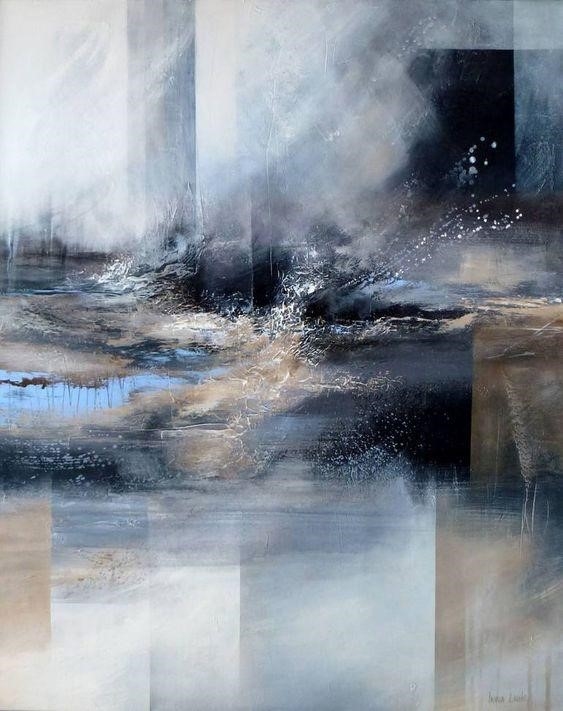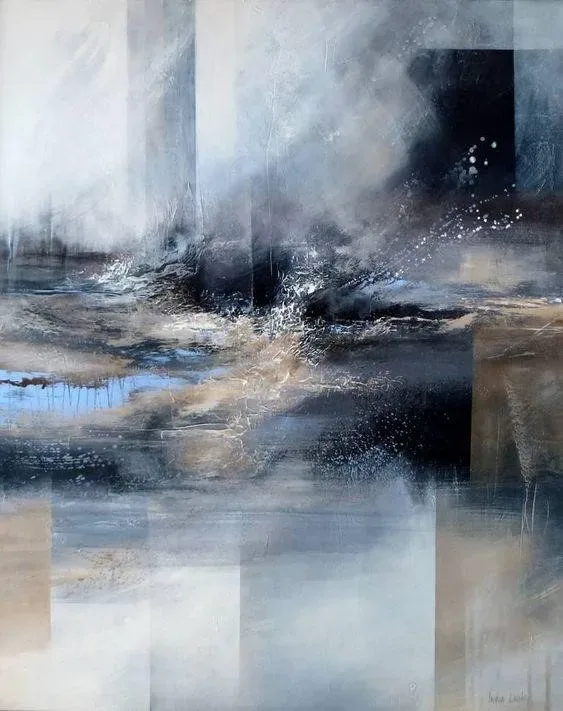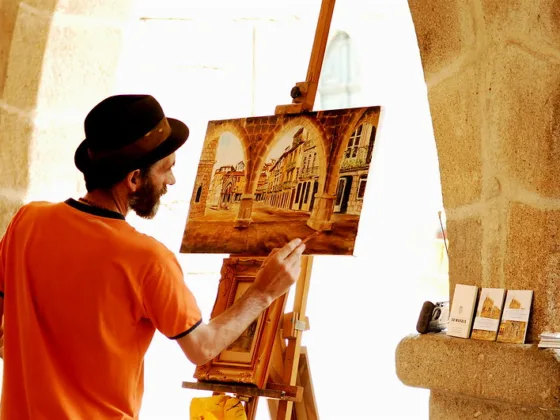Abstract painting is one of the most fascinating – and misunderstood – forms that art has.
As we mentioned in the article Why are works that seem to be painted by children worth so much? there are people who love it or hate it, but in the end, it never goes unnoticed.
Surely if you have ever seen this type of work you have asked yourself questions such as: “What the hell is that? Is it a sunset or a naked woman?” What am I supposed to be seeing? Etc “.
Although at the end of most of these doubts can be answered in the classic principle that “art is subjective”, in reality, there are ways to go deeper into the work.

For that reason, today we bring you an article that will help you better understand abstract art.
Clarification: This is just a basic guide for beginners. If you are a person with prior knowledge, this article may not be what you are expecting. Still, it’s a good idea to reaffirm some of the principles.
The Origin
To understand abstract art, it is important to know its origin and evolution.
For centuries, painting and art, in general, had a goal very similar to what we give to photography today: trying to capture reality as it is.
The artists of this period stood out for their technical ability and their ability to portray shapes in the most realistic way possible; and from time to time, his creativity was valued.
Although this principle lasted intact for many centuries, with the passage of time the paintings stopped being less realistic and explored more the aesthetic aspect.
One of the key moments of this change was made by Monet and Renoir with the birth of Impressionism during the 19th century.
These works, although not completely abstract, already showed his intention to highlight other elements outside the figure. For example colors, the decomposition of light, and lines.
With the beginning of the massification of photography, the a priori motivation of artists to portray in the most realistic way possible ended up in the background.
That is why we see much more creative and visually interesting works, as in the case of Van Gogh and Paul Cézanne.
Already at the beginning of the 20th century, abstract art emerged as we know it. With movements like Cubism and Expressionism, subjectivity and distortion became constant.
But it was not until the arrival of abstract expressionism and action painting when the experience was completely removed and elements outside the work were evaluated.
Today, abstract art is not only limited to painting, but can also be seen in sculpture, photography, and music.
How to Interpret it?
When looking at any work of art, the first question most people ask is: “What is it about?” While it’s a good place to start in many cases, the truth won’t get you very far when viewing abstract work, unless you’re willing to think more creatively.
A frequent peculiarity in abstract art is that they do not contain common elements.
That is things like flowers, people, landscapes, etc. For that reason, it is necessary to bear in mind that not all interpretations can be made from a realistic approach.
For example, for many a Pollock or a Kline transmit movement, meanwhile, a Kandinsky represents synthesis.
So how to interpret it? The answer is: it depends since each work has its peculiarities.
But to start you can ask questions of the type What does it transmit to me? What is its context? What pure elements does it use: color, line, texture, etc.? How I feel? That I like? etc.
In the following points, we will delve deeper into these questions.
It is important to keep in mind that when art is understood to be more than just an isolated, timeless creation without a context, it is almost certain that everything begins to make sense.
Read Also:
Pay Attention and Free the Mind
For some reason it is called “abstract art” and not only because it sounds beautiful …
Contemporary painting style of Abstract art requires an effort of concentration and ‘abstraction’ (worth the redundancy), on the part of the viewer.
Although at first glance you may not find any meaning in what you are observing, that does not mean that there is not. If that happens to you, keep trying.
Similarly related to this point, take your time. If you go to an exhibition or a museum, stop looking at your watch every 5 minutes and just let yourself go.
Experience Matters
When evaluating work, it is normal to focus only on the tangible, but when we talk about abstract art, the way you see it and the experience itself matter a lot.
Art critic Allen Craig explains this point as follows:
“Many famous abstract paintings are not simple images that evoke concrete memories. They are actually made to communicate with your unconscious side. “
For example, you are more likely to be struck by a large number of people in the room to see the Mona Lisa than the painting itself.
The same goes for abstract art: colors and size can convey more to you than strokes.
Understand the Context
There are times when, in order to understand a work, it is not enough to put all our attention on the painting and try to find meaning in it, but we also have to learn more about what the artist wanted to convey to us.
If you go to an exhibition, you will surely find a brochure or a card taped to the wall with a more or less general explanation of the meaning of the work and how it was made. If so, try reading it, as it will serve as a guide for interpreting it.
By the way, it is not always necessary to pay attention to the title of the paintings, especially if we are talking about abstract expressionism.
Many artists of this movement used to name their works with numbers or colors, in order that the viewer would not be distracted; although of course, there are some exceptions.
Never Denigrate the Artist
Many of the people who do not understand this type of art make comments like “My 7-year-old niece can do that, or more.”
But the reality is that the vast majority of abstract artists are great draftsmen and painters with innate abilities.
Kandinsky said it very well:
“It is easier to masterfully draw a rose or paint a splendid portrait than to make a fairly acceptable abstract painting that is why, of all the arts, abstract painting is the most difficult”.
Yes, there are works full of random brush strokes that probably didn’t take more than 5 minutes to finish, but that doesn’t mean they are all the same.
Are you someone who finds beauty in an abstract painting? www.indianartzone.com is a must-visit website where you find a variety of abstract paintings .
They are exceptionally painted by those artists who spend their time brainstorming on how to deliver the best quality painting. Visit the www.indianartzone.com website to know more.










